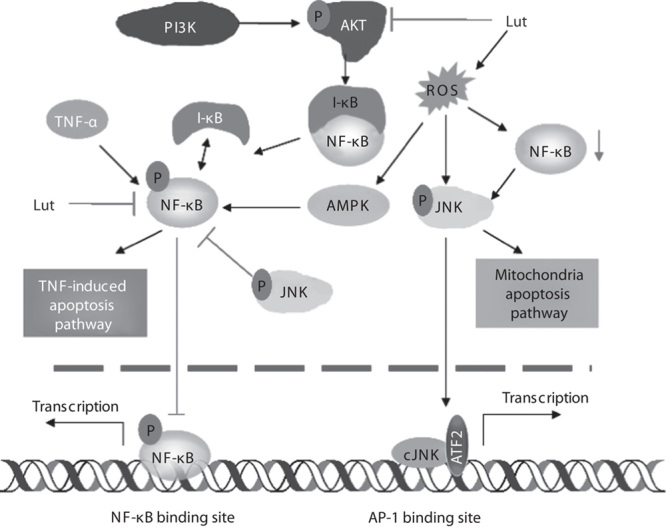Fig. 3.

Mechanism of luteolin (Lut)-triggered TNF-α-induced cancer cell apoptosis. Free p-NF-κB translocates to the nucleus to mediate the transcriptional activation of genes. Luteolin can suppress the activity of NF-κB translocation, activating the TNF-α-induced apoptosis pathway. The generation of ROS caused by treatment with luteolin plays a marginal role in suppressing NF-κB, further enforcing JNK activation. ROS activate the AMPK signaling pathway, which interacts with the NF-κB pathway, thereby inhibiting NF-κB DNA-binding activity. Activating JNK activates the mitochondrial apoptosis pathway. Furthermore, luteolin’s inhibition of NF-κB activity augments and prolongs cJNK activation induced by TNF-α. AMPK, AMP-activated protein kinase; AP-1, activating protein 1; ATF2, activating transcription factor 2; JNK/cJNK, c-Jun N-terminal kinase; NF-κB, nuclear factor-κB; ROS, reactive oxygen species; TNF-α, tumor necrosis factor α.
